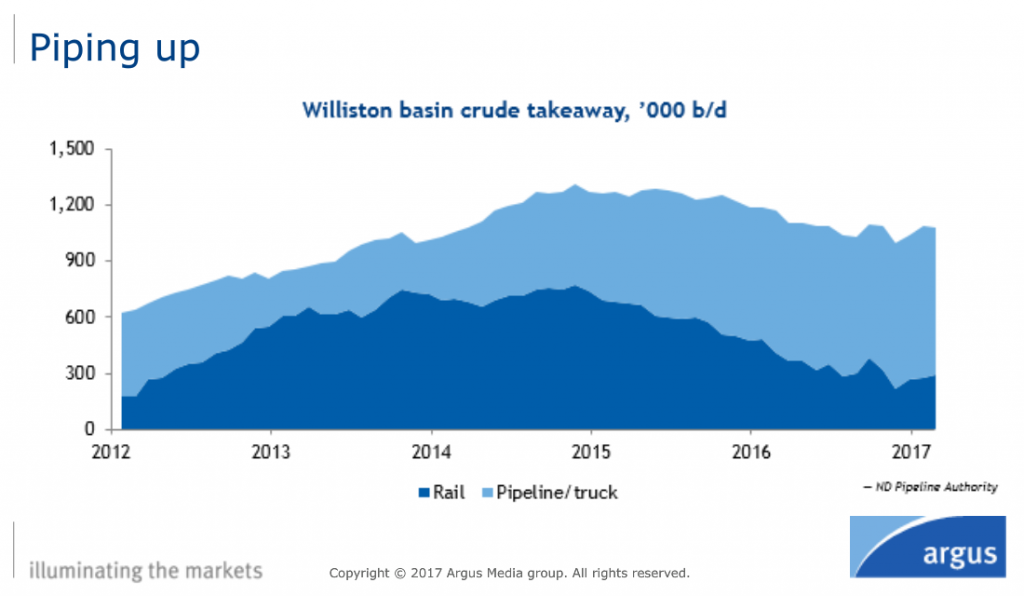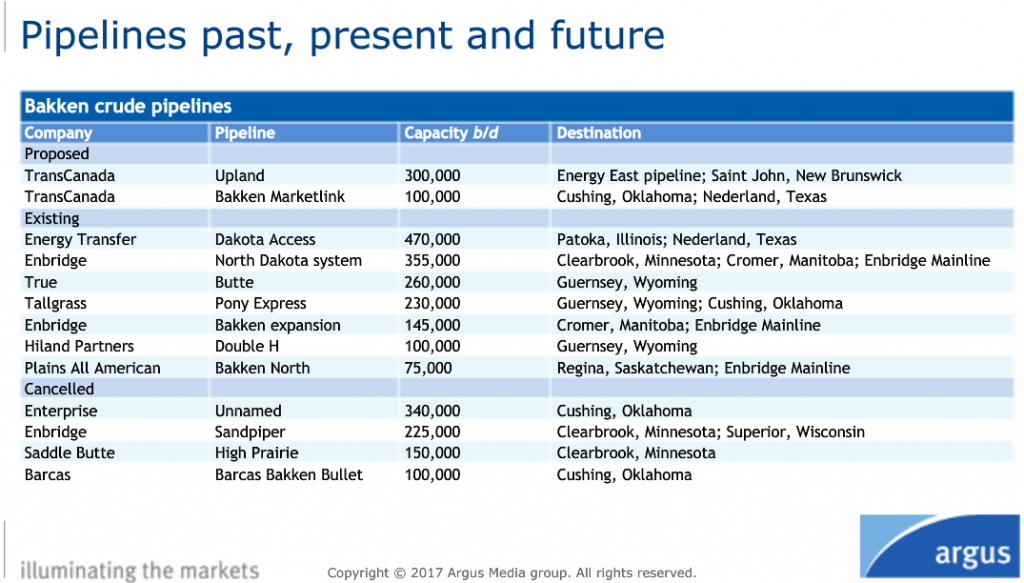Overall activity up in Bakken; pipes starting to replace rail
The North Dakota Industrial Commission released its latest Oil and Gas Production Report this week, outlining hydrocarbon activity in the state for April 2017.
Oil production up
The NDIC reported that oil production increased in April to about 1,051 MBOPD, from 1,026 MBOPD in March. The number of producing wells increased further, exceeding last month’s all-time high. NDIC reports that a total of 13,717 wells were producing in April, a new all-time high for North Dakota. About 86% of these wells are producing from the Bakken and other unconventional plays, while 14% of active wells produce from legacy conventional pools.
Along with the all-time high number of producing wells, gas production in April has set a new record for North Dakota. According to the NDIC, gas production rose sharply to 1,836 MMcf/d in April, up from 1,731 MMcf/d in March. The previous production record was 1,760 MMcf/d, set in November 2016.
Rigs up to 55
Rig activity in North Dakota has increased somewhat, from 46 in March to 55 today. According to NDIC Director Lynn Helms, operators have shifted to incremental increases and decreases this year. If this is the case, rigs in the state may be down in next month’s report, as lower prices decrease operator activity. Rig utilization rates for rigs capable of 20,000+ feet increased from ~25% to ~30%.
Drilling permits up to 100
Drilling permit activity has varied widely among the past three months. Drilling permits dropped sharply from 93 in March to 58 in April, and then nearly doubled to 100 in May. NDIC reports that the all-time high number of permit requests was 370 in late 2012. The number of drilled uncompleted wells increased significantly in April, adding about 140 to a total of about 830 wells.
Pipelines beginning to replace rail
According to the NDIC, North Dakota remains dependent on rail deliveries to ensure crude takeaway capacity is adequate. However, the need for rail is decreasing. While production was growing before the industry downturn in 2014, most companies turned to rail to support additional production. However, since then pipelines have been an increasingly significant factor in transporting Bakken crude.
According to a recent Argus webinar on the Bakken, pipelines and crude markets, there is another 400,000 BOPD of proposed crude pipelines that would take North Dakotan crude.
Crude from the Bakken is an ideal export grade, as it is not a blended grade and has stable quality. Crude from the Bakken and Three Forks formations is almost always between 40°API and 42°API, with very low sulfur and other contaminants. Oil consumers all over the world, from Central America to China, have imported light sweet crude in the past, and are therefore potential markets for exported Bakken crude. As U.S. crude exports continue to grow, oil from North Dakota may end up fueling places throughout the world.




